Delhi-based Dayanita Singh packs over 400 iconic images in two suitcases and flies down to showcase them in a series of dynamic installations that give new meaning to books, photographs and art
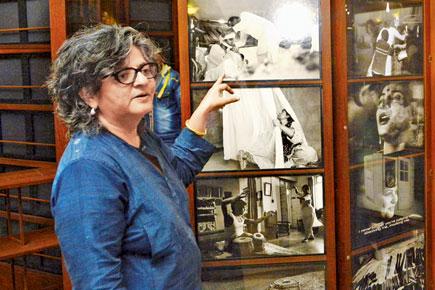
This Delhi-based artist has brought two mobile museums to Mumbai
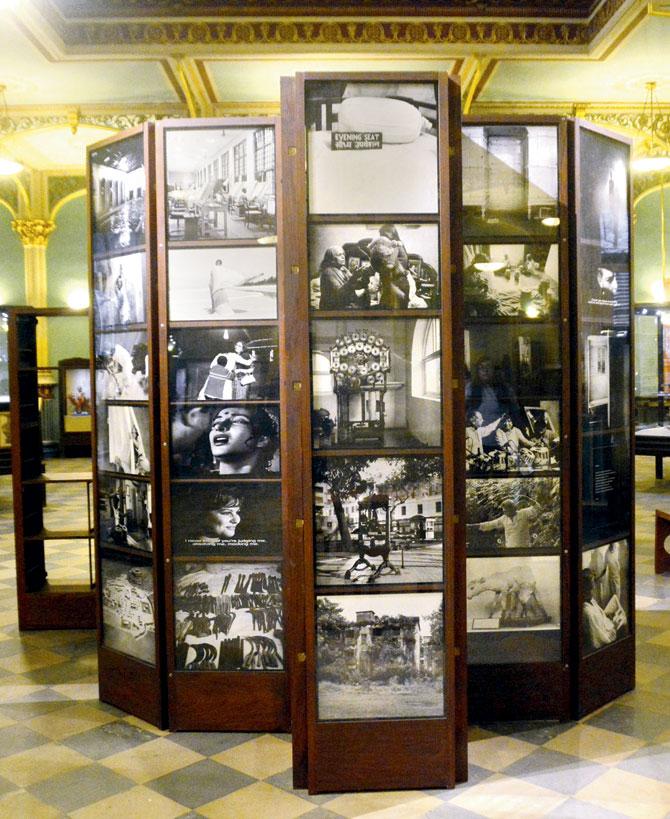
ADVERTISEMENT
Creamy, black-and-white photographs sitting within tall, wooden pillars, joined by hinges, greet us when we step into Dr Bhau Daji Lad Mumbai City Museum in Byculla. Juxtaposed against a row of static artefacts ensconced in glass cages, the pillars and the images within them move according to the whims of artist Dayanita Singh. We bend a little, and spot a still of Nargis Dutt from Shree 420. When Singh shifts the angle of a panel, it changes form from a closed-door chamber into a labyrinth. Instantly, a series of images on the side unfold. Coincidentally, next to the actress is a frame of her husband, Sunil Dutt tying a turban on son-in-law Kumar Gaurav’s head. "I found pre-determined formats of photography exhibition dull. I like to continuously change how the images relate with each other because they are dependent on what goes next to it," says the 55-year-old Delhi-based artist, who has brought down two mobile museums from a family of nine that comprise her Museum Bhavan, as part of Suitcase Museum that opens tomorrow.

(Above and top) Singh shifts the wooden pillars of Museum Of Chance
The exhibition brings together over 400 iconic images from Singh’s illustrious oeuvre spanning three decades, which includes publishing 11 photo-books, starting with Zakir Hussain (1986), often made in collaboration with the German publisher, Gerhard Steidl. Set up in different parts of the museum, the images are presented as a collection of book-objects, a work that is concurrently a book, an art object, an exhibition and a catalogue, displayed in customised wooden frames. For instance, the panels on the ground floor comprise Museum Of Chance and Museum Of Little Ladies. The former is the mother museum, evoking the artist’s memories, featurings images that have inspired Singh. The latter displays portraits of the artist with her siblings, some even taken by her mother Nony.
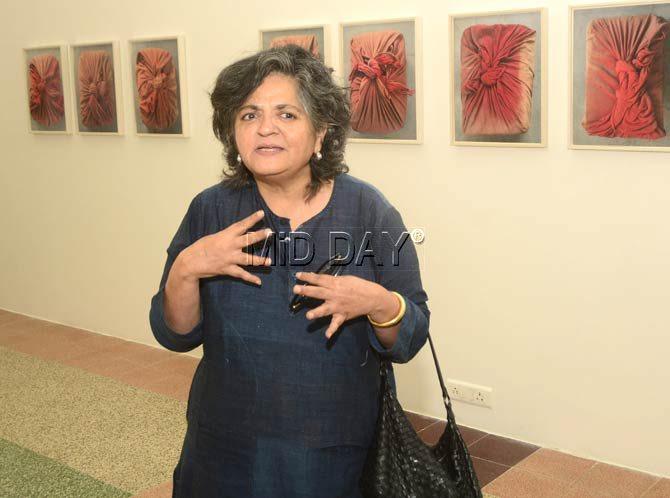
Singh with a series of portraits that comprise Time Measures. Pic/Bipin Kokate
Meanwhile, Museum Of Shedding is a meditative work, housing a bed, desk and bench along with minimalist architecture images, which ruminate Singh’s relationship with photography. "Her work goes to the basics of art where there were no boundaries between an image and the way it was presented. However, though we have created different forms with the images, each by itself, is a classic," shares exhibit curator Tasneem Zakaria Mehta.
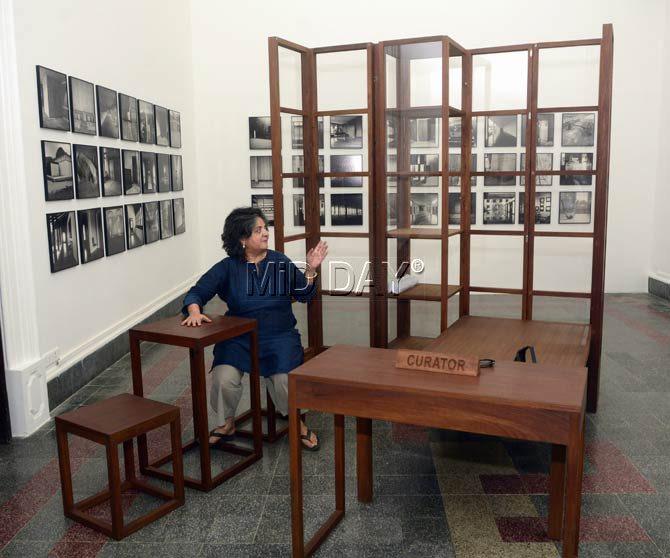
Museum Of Shedding, a meditative work with minimalist photographs, a desk and a bed. Pic/Bipin Kokate
Then, we walk into another room with a series of coloured frames featuring a bundle tied with a red cloth. Exploring the idea of time, the frames reveal the different moods of cloth and the knots, withered over a passage of time. "I find them visceral. I don’t make images that are dramatic or those that will get ‘likes’. With my photographs, I aspire to take a viewer into a space that poetry or music is capable of taking them to," she adds.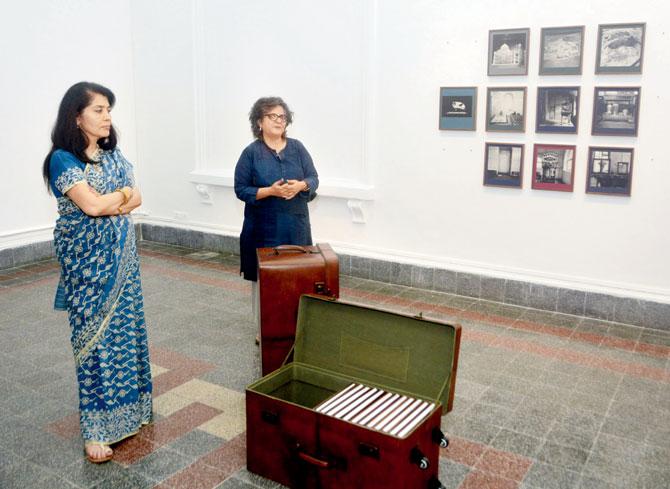
Dayanita Singh and Tasneem Mehta with the suitcases. Pics/BIPIN KOKATE
We also come across miniature book objects that comprise Kochi Box, featuring images that Singh made in Kerala during the Kochi Biennale in 2014. An unbound book with 31 cards, each is displayed in a wooden box, which can be shuffled and shown in any sequence. They will make their way to this edition of the biennale in Singh’s bag. "The skill is not in taking a photograph. It lies in creating an edit that can work in any combination. The same images will give you a different experience with the way they are displayed," she shares.
Finally, we come face-to-face with the two suitcases that take the pride of place in a room with whitewashed walls, dotted with rows of nails hanging an installation of images. While chatting with us, Singh shifts the place of three photographs, pre-dominantly featuring clothing and stacks them together on a wall. As the installation changes form, so does the museum. "Maybe I could make Museum Of Cloth around it," contemplates Singh, planning the birth of a baby museum. Maybe, when you drop in the next time, you might just find a whole new installation. Isn’t that the beauty of a mobile museum?
 Subscribe today by clicking the link and stay updated with the latest news!" Click here!
Subscribe today by clicking the link and stay updated with the latest news!" Click here!






